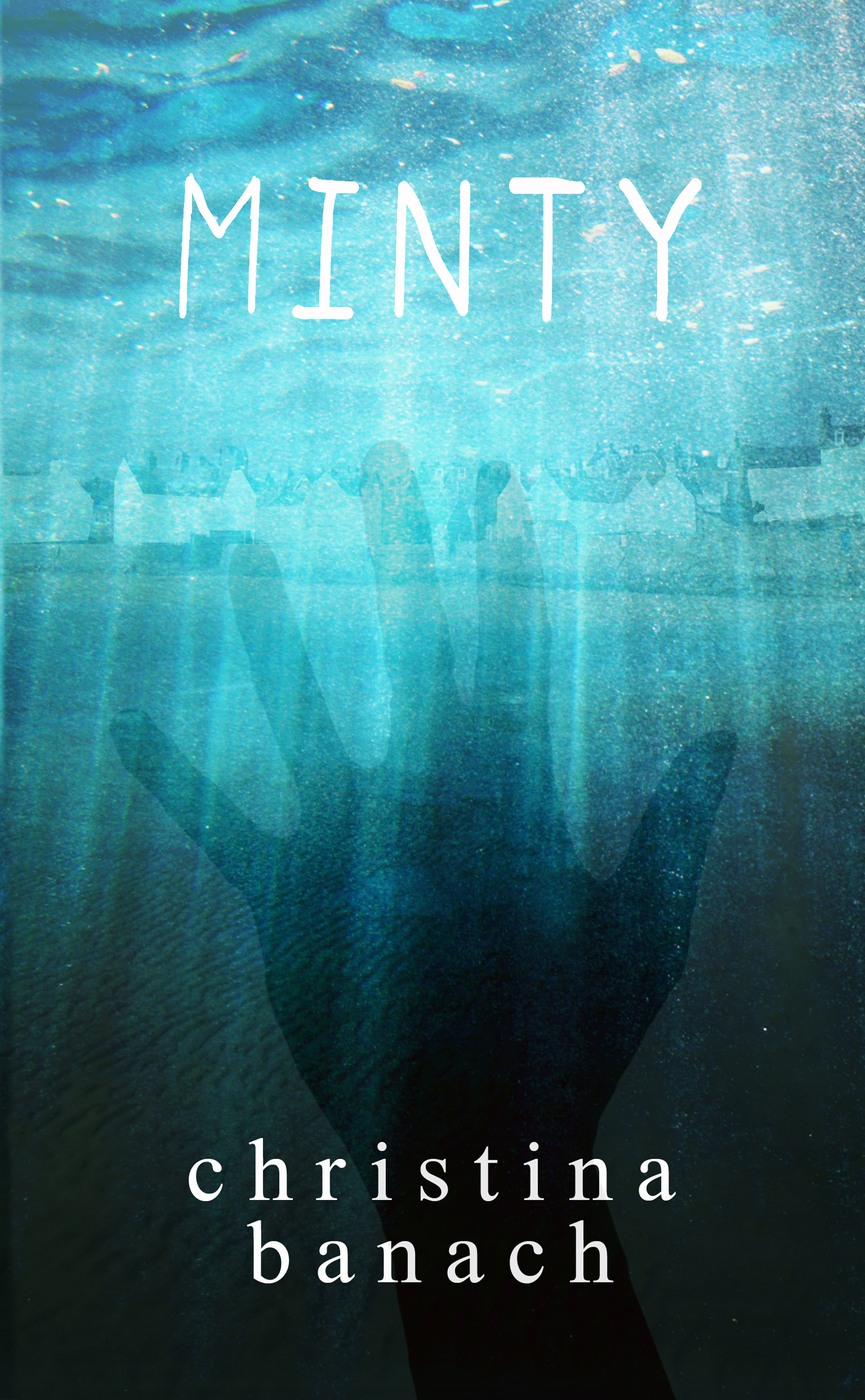“Grief doesn’t conform to a script, or a set of rules.”

The quote above is from my debut novel, Minty, a ghost story told from the point of view of the ghost. It’s a tale of a fourteen-year-old girl trapped in limbo and compelled to watch the devastation her death wreaks on those she has left behind. Integral to the plot is how each of the characters copes with bereavement, and how the protagonist helps them find closure. So far, so depressing. Except it isn't, or not according to the reviews, which is a relief as that’s exactly what I spent so long trying to achieve!
Before the book was published I, like most authors, hoped it would be well received. So far it has been, but it’s what the reviewers say about the way it deals with death and grief that has given me the greatest satisfaction. I had endeavoured to craft an honest and delicate story that would move the reader as much as it did me, and what I discovered in the process is that there is a way to write about the pain of loss and grieving without thoroughly depressing a young adult readership.
So, what advice can I offer to help you draft your own story about death and bereavement? Just as there are no rules on how to grieve, there are also none when it comes to writing about such a sensitive issue. However, what I can give you are a few tips on how I went about it myself.
1. Balance
Too many dark and emotional scenes, one after the other, would be draining for the reader. To avoid this I carefully considered each of my scenes in turn in order to balance the heavier ones with those containing humour, and which therefore had an overall lighter tone. I also followed moments of high emotional intensity by including some quieter, contemplative scenes. In addition I spent a lot of time considering the personalities of each character and made sure that I contrasted those who were consumed with grief with others who had effective coping mechanisms and thereby provided a steadying influence.
2. Voice
Minty is told in the first person present tense. Although this presented its own limitations (the reader can only experience the story through Minty’s perspective) it also offered me the opportunity to lighten things up a little. What I chose to do was write in such a way that the reader is almost inside Minty’s head, a mind that leans towards wisecracks and sarcasm. A well-timed quip can go a long way to relieving the tension.
3. Injecting Humour Through Dialogue
It isn’t only Minty who enjoys a joke – deliberately so. Enter Jack Reid, her teenage mentor in limbo. In creating Jack I gave Minty not only a fellow traveller, but also one whose wit and off-the-wall observations would add the right touch of levity when required.
4. Character Quirks
Minty and her sister Jess – her identical twin – are keen jazz enthusiasts who play the saxophone. They are also fascinated, to the point of obsession, with anything to do with the Ancient Romans. Threading your characters’ specific interests and quirks through your plot is never a bad idea – it helps to make them appear fully realised. As well as this it can, as in my story, lend an air of mystery and add richness and fascination to the plot.

5. Animals
‘Never work with children or animals’. This advice is bandied about in acting circles but in writing terms I would say ‘do, please do’. Including teenage characters is a given in YA fiction, but adding an animal or two can do a lot for your story too, especially one dealing with difficult themes. There are three animals in Minty, namely Romulus, Remus and Octavius - two Golden Retrievers and a tortoiseshell cat. They are there to perform several functions, one of which is to provide comfort to the main characters and, by extension, to the reader.
6. Hope
Death and its aftermath is a heavy subject, so to counterbalance this I think it’s essential to leave your young reader with a sense of hope. I spent a long time trying to hit upon the perfect tone for the book’s final scene. As well as tying up any loose ends I wanted to make sure that the reader would feel hopeful and satisfied by the end of the story.
So, these are my top tips for writing about death and bereavement in young adult fiction. But please allow me to finish by offering you a couple more:
7. Keep It Real
Although I had experienced bereavement when I began to write my book I don’t believe that it is necessary to have gone through the grieving process yourself in order to write about it effectively. If you don’t have first hand experience then research and read around the topic (I still did this despite my background knowledge), talk to bereavement experts and, if possible, those affected by loss. Dig deep within yourself to imagine how you would react if you lost someone close.
8. Don’t Patronize
Writing for young adults doesn't mean a writer shouldn't fully explore the impact of death upon your cast of characters. Be honest with your reader. I tried to approach the subject matter as genuinely as I could and therefore didn't skirt over difficult emotions or tone down those high-impact emotional scenes I felt were necessary to the plot. However, sensitivity is the key here.
Writing about death and its consequences isn't the lightest of subject matter but it is one that can bring enormous satisfaction to you, the author, and offer a moving and memorable experience to the young adult reader.
Christina Banach is a former head teacher who lives in Scotland with her husband and their two rescue dogs. Her debut novel, Minty, was a Scottish Book Trust Teen Book of the Month. It was also shortlisted for the Society of Children’s Book Writers and Illustrators prestigious Crystal Kite Award, and nominated for the Children’s and Young Adult Bloggers’ Literary Awards. Find out more about Christina on her website or connect with her on Twitter.
Comments